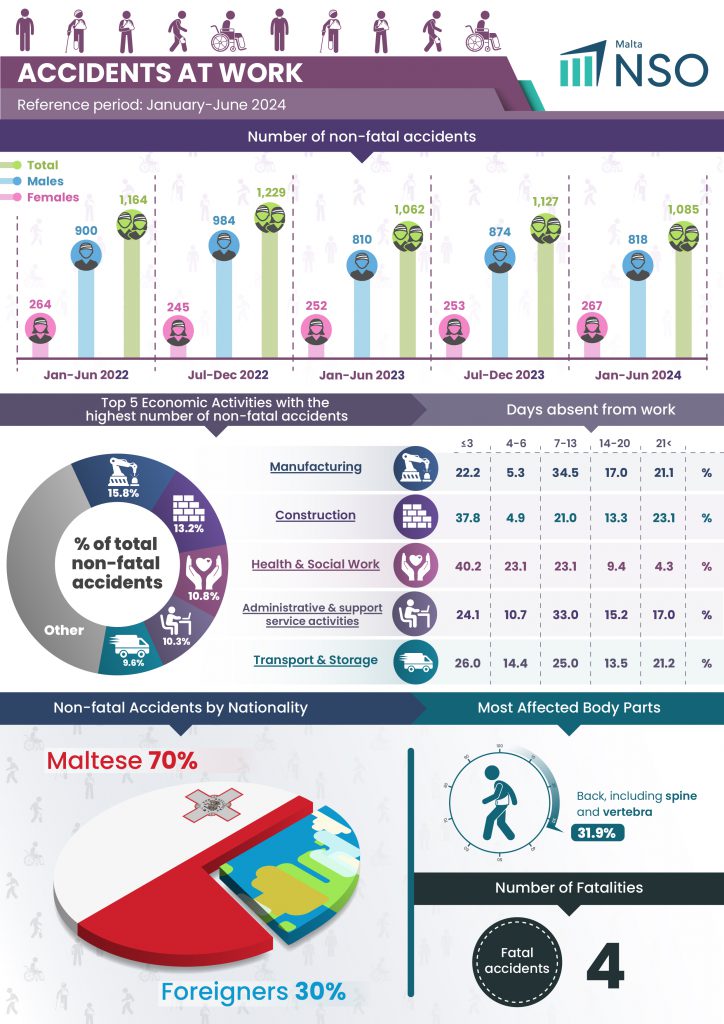Men three times more likely to get injured at work

Men are three times more likely to get injured at work, with the most common type of injury sustained being to the back.
This data was revealed by the National Statistics Office which gave a comprehensive overview about occupational accidents in the first half of this year. In total, 1,085 cases of non-fatal accidents were reported of whom 818 were males and 267 females. The majority of these cases (171) happened in the manufacturing industry, followed by construction (143) and in third position human health and social work (117). The latter, however, bucks the trend with regards to gender as the overwhelming number of those injured were females (86) as opposed to males (31). This ratio reflects the fact this this particular stream attracts women much more than man.
According to the NSO almost one third of the non-fatal injuries affected the back, including spine and vertebra, followed by injuries to the torso and organs. The third most common injuries were reported in the upper extremities of the body which include the upper arm, forearm and hand. In almost two thirds of the cases the wounds sustained were superficial, but one in four suffered dislocations, sprains and strains.

Between January and June 2024, the Occupational Health and Safety Authority (OHSA) reported four fatal accidents at work. The deaths were all non-EU nationals and males and were engaged in elementary occupations. In half of the cases, victims were aged between 45 to 54 years. During the first half of 2024, half of all fatalities at work occurred in the construction sector. 50 per cent of all deaths were caused by head injuries, involving concussions and internal injuries. During 2023, the incidence rate of fatal accidents at work stood at 1.7 down from 5.3 in the previous year in which unfortunately the fatalities recorded reached 15.
Meanwhile, the OHSA is in the process of unveiling plans to reform existing legislation regulating occupational health and safety. The bill aims to give the regulator more teeth and address a series of grey areas which are hindering enforcement.
